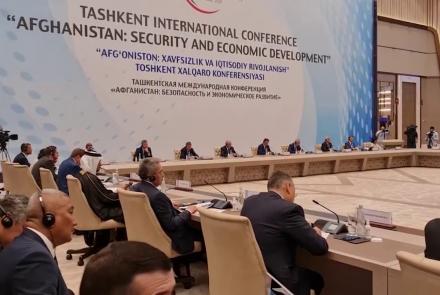Some of the participants at the Tashkent conference said that the Central Asian nations, particularly Uzbekistan, are seeking to connect to South Asia via Afghanistan.
Analysts said that the formation of trade centers on the two sides of the Amu River will benefit Afghanistan and Central Asian countries.
However, officials from Tajikistan and Uzbekistan expressed concerns over the presence of insurgents in Afghanistan.
"There is no confidence in Central Asian countries that there is full stability and security in Afghanistan. Another point is that the Uzbekistan president stressed that if there is any threat from across the Amu River, the Central Asian countries will not be secured from any kind of threat," said Meer Asrar Ahraraf, a participant.
Meanwhile, economists said that the Central Asian countries agreed on forming of an economic center on the two sides of the Amo river.
"The economic cooperation of Uzbekistan with Afghanistan has bilateral benefits because it will benefit not only Uzbekistan but also all Central and South Asia countries," said Bioni Alimof, Central Asian issues analyst.
The economic development of Afghanistan and regional connectivity are the main parts of the Tashkent conference statement.
"Regional projects like electricity and railways are in Afghanistan's interest as well. The neighbours waited for decades for a situation to pave the way for implementation of these projects. These projects need billions of dollars in funding and no one has the funds for it," said Torek Farhadi, a political analyst.
"The neighbours and countries involved in the Afghan situation are trying to make the Islamic Emirate busy and give them promises which are not put into practice," said Fahim Chakari, an economist.
The TAP, a trans-Afghan railway, and CASA-1000 are the main development projects which would cross through Afghanistan.



Comment this post